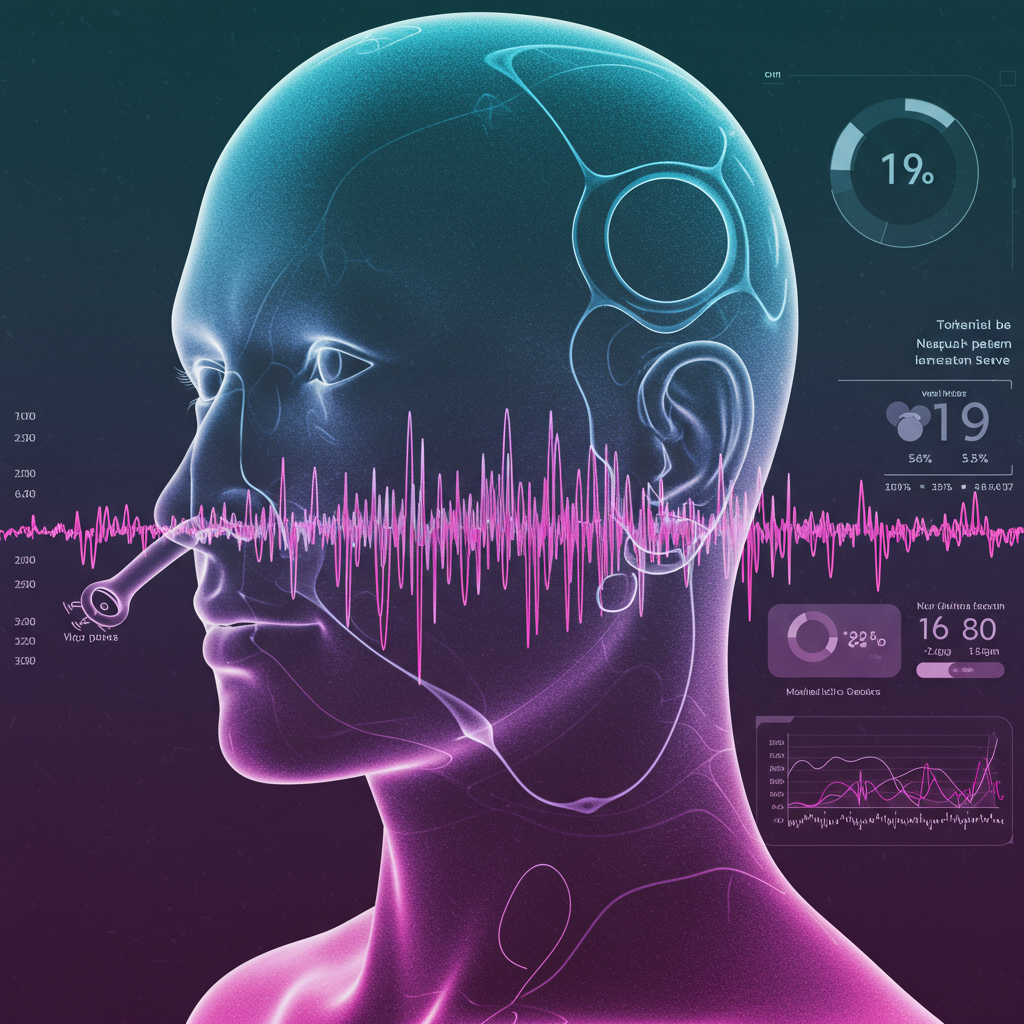Your breath is far more unique than you might imagine. New scientific research suggests that the subtle patterns of how you breathe through your nose are as distinct as a fingerprint, capable of identifying you with remarkable accuracy. But the revelations go deeper: these “breathing fingerprints” may also offer a sensitive window into your physical and mental well-being.
The Science Behind Your Unique Breath
Published in the journal Current Biology, a groundbreaking study led by researchers at Israel’s Weizmann Institute of Science unveiled the concept of a unique “nasal respiratory signature” for each person. The team hypothesized that because breathing is controlled by incredibly complex networks within the brain, and every brain is wired differently, these individual differences would be reflected in distinct breathing patterns. They describe this as reading a “brain readout” through respiration.
To test this, scientists developed a lightweight, wearable device called the “Nasal Holter.” Weighing just 22 grams, this innovative gadget uses soft tubes placed beneath the nostrils to continuously track nasal airflow from both nostrils for extended periods, up to 24 hours. This differs significantly from standard, short-duration breathing tests often used for lung function, allowing researchers to capture the subtle, long-term variability patterns that make each person’s breath unique.
Using the data collected from participants going about their daily lives – sleeping, studying, exercising – the researchers analyzed dozens of specific temporal features and 24 different metrics related to breathing, focusing on how these patterns varied over time.
More Accurate Than Voice Recognition? Breath as a New Biometric
The findings were striking. Analyzing these unique breathing patterns, the researchers could identify individual participants with an impressive 96.8% accuracy. What’s more, these “respiratory fingerprints” proved incredibly stable, allowing for accurate identification even using data collected years after the initial study. This level of precision rivals, and in some cases surpasses, the accuracy of current voice recognition technologies, positioning breathing as a powerful new frontier in biometric identification.
Despite participants engaging in a wide range of activities, their fundamental breathing patterns remained remarkably distinct and consistent enough for reliable identification.
Beyond ID: How Your Breath Reflects Health and Mindset
The study revealed that these unique breathing signatures aren’t just identifiers; they correlate strongly with various personal traits and health indicators. The patterns were found to reflect factors such as:
Body Mass Index (BMI)
Sleep-Wake Cycles and States: The device was shown to be near-perfectly accurate in detecting different sleep states.
Levels of Anxiety and Depression: Participants who reported higher levels of anxiety, even if they didn’t meet clinical criteria, showed specific breathing characteristics during sleep, such as shorter inhales and increased variability in pauses between breaths. Those with depression also exhibited altered airflow patterns during waking hours.
Behavioral Tendencies and even traits linked to Autism.
These correlations suggest that continuous, long-term nasal airflow monitoring could provide a sensitive, non-invasive window into subtle shifts in physical and emotional well-being, potentially signaling issues even before other symptoms are apparent.
Does Breathing Influence Your Mood? A Potential Two-Way Street
Intriguingly, the research prompts a fascinating question: while it’s intuitive that feeling anxious or depressed might change how you breathe, could the reverse also be true? The authors ponder whether specific breathing patterns might actively contribute to feelings of anxiety or depression.
This opens up exciting possibilities for therapeutic applications. If certain breathing styles are linked to specific mental states, consciously learning to modify breathing patterns could potentially serve as a novel intervention to improve emotional well-being. The researchers are cautiously optimistic about exploring this potential to move beyond diagnosis towards breath-based treatments.
Challenges and the Future
While the findings are promising, the current technology faces practical challenges. The Nasal Holter device, with tubes under the nose, can be uncomfortable for long-term wear and might be perceived negatively or associated with illness. It also doesn’t account for mouth breathing and can slip during sleep. Experts note that further validation through controlled studies is needed to confirm breathing patterns as consistent indicators of specific conditions.
The research team is already working to design a more discreet, comfortable, and user-friendly version for everyday use.
The study also raises important considerations regarding privacy. While the current device requires physical contact, the possibility of future advancements enabling remote detection of breathing patterns could open the door to concerns about involuntary biometric surveillance.
In conclusion, this research highlights that our breath is a deeply personal, unique, and dynamic physiological signal. It not only serves as a powerful potential biometric identifier but also offers significant insights into our physical and mental health, reflecting the intricate workings of our brains. The development of more advanced and comfortable breath-monitoring technology could pave the way for innovative diagnostics and even therapeutic interventions in the future.



